Intro
Master VBA with our guide on how to select a worksheet in Excel using Visual Basic, covering worksheet objects, activation, and manipulation with code examples and tips for automation and macros.
Working with worksheets in VBA (Visual Basic for Applications) is a fundamental aspect of automating tasks in Excel. Selecting a worksheet is the first step in performing various operations such as data manipulation, formatting, and more. This article will delve into the details of selecting worksheets in VBA, including the reasons why you might want to do so, the different methods available, and practical examples to get you started.
To begin with, understanding why selecting a worksheet in VBA is important can help you appreciate the flexibility and power that VBA offers. Excel worksheets are the core of any Excel workbook, containing the data, formulas, and formatting that make up your spreadsheet. By learning how to select and manipulate worksheets using VBA, you can automate repetitive tasks, create custom tools, and even interact with other Office applications.
Importance of Selecting Worksheets in VBA
Selecting a worksheet in VBA allows you to perform a wide range of actions, from simple data entry and formatting to complex data analysis and reporting. It is the foundation upon which more advanced VBA scripts are built. Whether you're looking to automate a daily task, create a custom Excel add-in, or simply make your workflow more efficient, knowing how to select and work with worksheets in VBA is essential.
Methods to Select a Worksheet
There are several ways to select a worksheet in VBA, each with its own advantages and use cases. Here are some of the most common methods:
1. Using the Worksheets Collection
The Worksheets collection is one of the most straightforward ways to select a worksheet. You can access a worksheet by its index (position in the workbook) or by its name.
' Select the first worksheet
Worksheets(1).Select
' Select a worksheet by name
Worksheets("Sheet1").Select
2. Using the Activate Method
While similar to Select, the Activate method makes the specified worksheet the active sheet but does not necessarily select any cells.
Worksheets("Sheet2").Activate
3. Looping Through Worksheets
If you need to perform an action on every worksheet in a workbook, you can loop through the Worksheets collection.
Dim ws As Worksheet
For Each ws In ThisWorkbook.Worksheets
' Perform action on ws
ws.Range("A1").Value = "Hello, World!"
Next ws
Practical Examples
Let's consider a few practical examples to illustrate the use of selecting worksheets in VBA:
- Example 1: Creating a New Worksheet and Selecting It.
Sub CreateAndSelectNewWorksheet()
Dim newWS As Worksheet
Set newWS = ThisWorkbook.Worksheets.Add(After:=ThisWorkbook.Worksheets(1))
newWS.Name = "MyNewSheet"
newWS.Select
End Sub
- Example 2: Selecting a Worksheet Based on a Condition.
Sub SelectWorksheetBasedOnCondition()
Dim ws As Worksheet
For Each ws In ThisWorkbook.Worksheets
If ws.Name Like "Data*" Then
ws.Select
Exit For
End If
Next ws
End Sub
Tips and Best Practices
- Avoid Using
SelectandActivateWhen Possible: These methods can slow down your code and may cause issues if the user is working in the workbook while the macro is running. Instead, work directly with the objects. - Use Meaningful Worksheet Names: Naming your worksheets descriptively can make your VBA code easier to read and understand.
- Test Your Code: Always test your VBA code in a safe environment before running it on critical data.
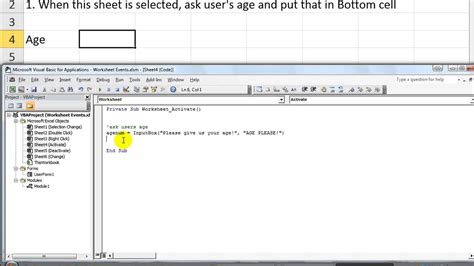
Working with Multiple Worksheets
Sometimes, you may need to select or work with multiple worksheets at once. VBA provides several ways to achieve this:
Selecting Multiple Worksheets
You can select multiple worksheets by using the Worksheets collection and specifying the worksheets you want to select.
Sub SelectMultipleWorksheets()
Worksheets(Array("Sheet1", "Sheet3")).Select
End Sub
Performing Actions on Multiple Worksheets
To perform an action on multiple worksheets, you can loop through the selected worksheets.
Sub PerformActionOnMultipleWorksheets()
Dim ws As Worksheet
For Each ws In ActiveWindow.SelectedSheets
' Perform action on ws
ws.Range("A1").Value = "Selected"
Next ws
End Sub
Gallery of Worksheet Selection Examples
Worksheet Selection Examples

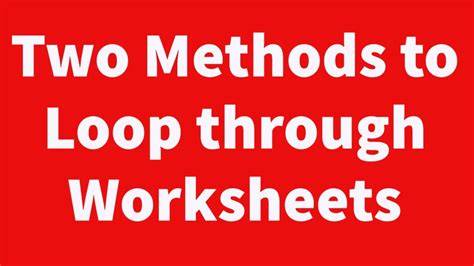
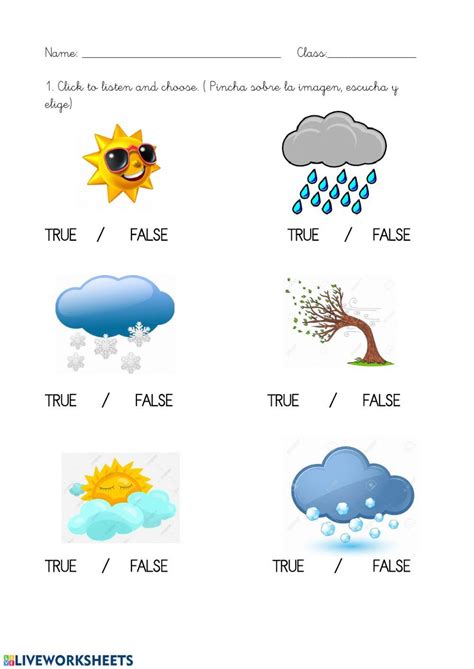

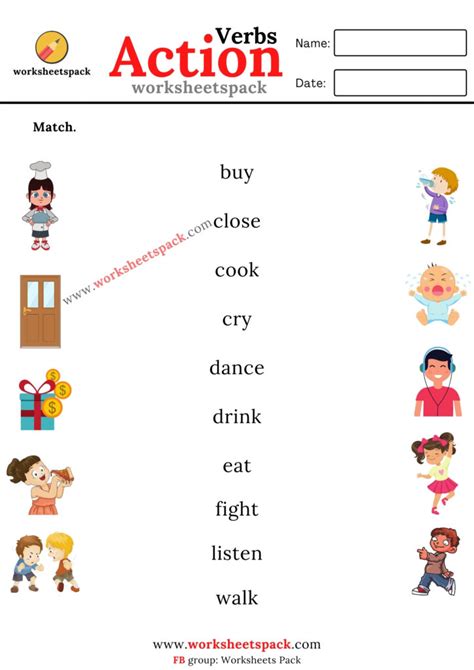
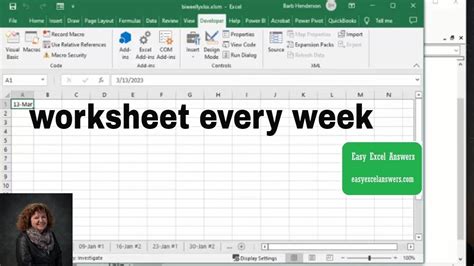
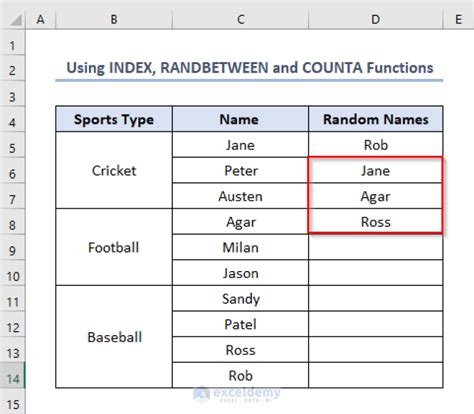
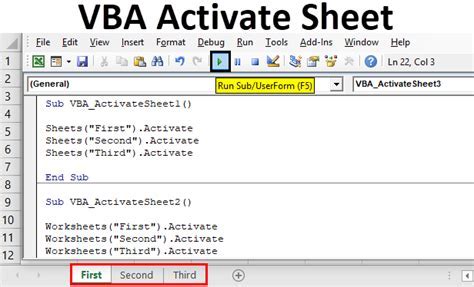
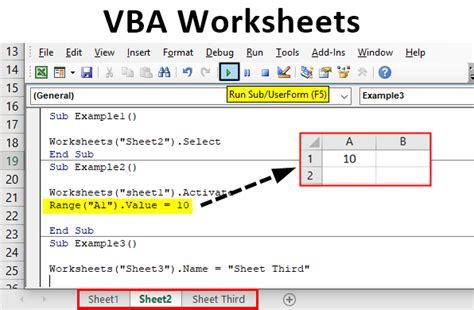

FAQs
How do I select a worksheet in VBA?
+You can select a worksheet in VBA by using the `Worksheets` collection and specifying the worksheet you want to select, either by its index or its name. For example, `Worksheets(1).Select` or `Worksheets("Sheet1").Select`.
What is the difference between `Select` and `Activate` in VBA?
+`Select` is used to select a range of cells or a worksheet, while `Activate` is used to make a worksheet the active sheet. You can have a worksheet activated without any cells being selected.
How do I loop through all worksheets in a workbook using VBA?
+You can loop through all worksheets in a workbook by using a `For Each` loop with the `Worksheets` collection. For example, `For Each ws In ThisWorkbook.Worksheets` followed by your code and then `Next ws`.
In conclusion, selecting worksheets in VBA is a fundamental skill that can greatly enhance your ability to automate tasks and workflows in Excel. By understanding the different methods available for selecting worksheets and applying best practices, you can create more efficient and effective VBA scripts. Whether you're a beginner or an experienced VBA developer, mastering worksheet selection is a crucial step in unlocking the full potential of Excel automation. Feel free to share your thoughts, ask questions, or provide feedback on how you use VBA to select and work with worksheets in your Excel projects.